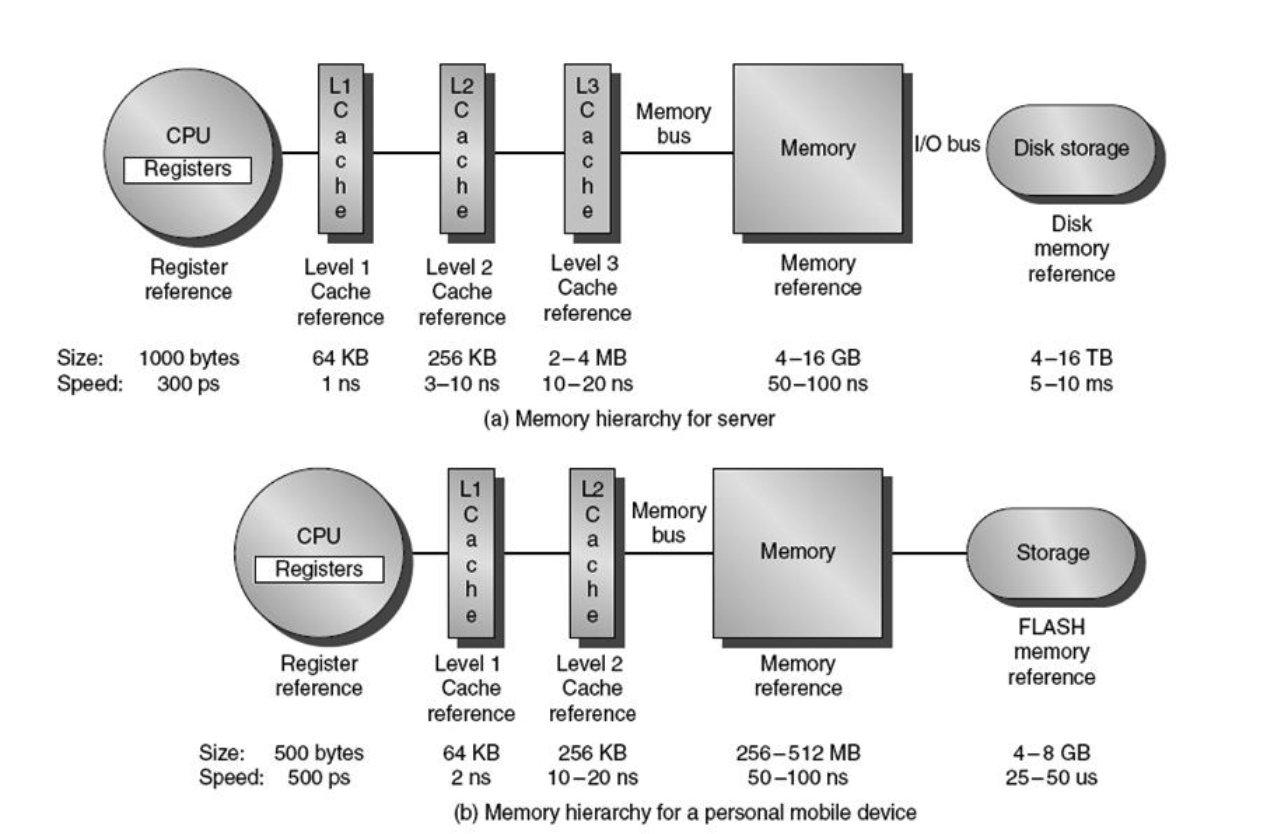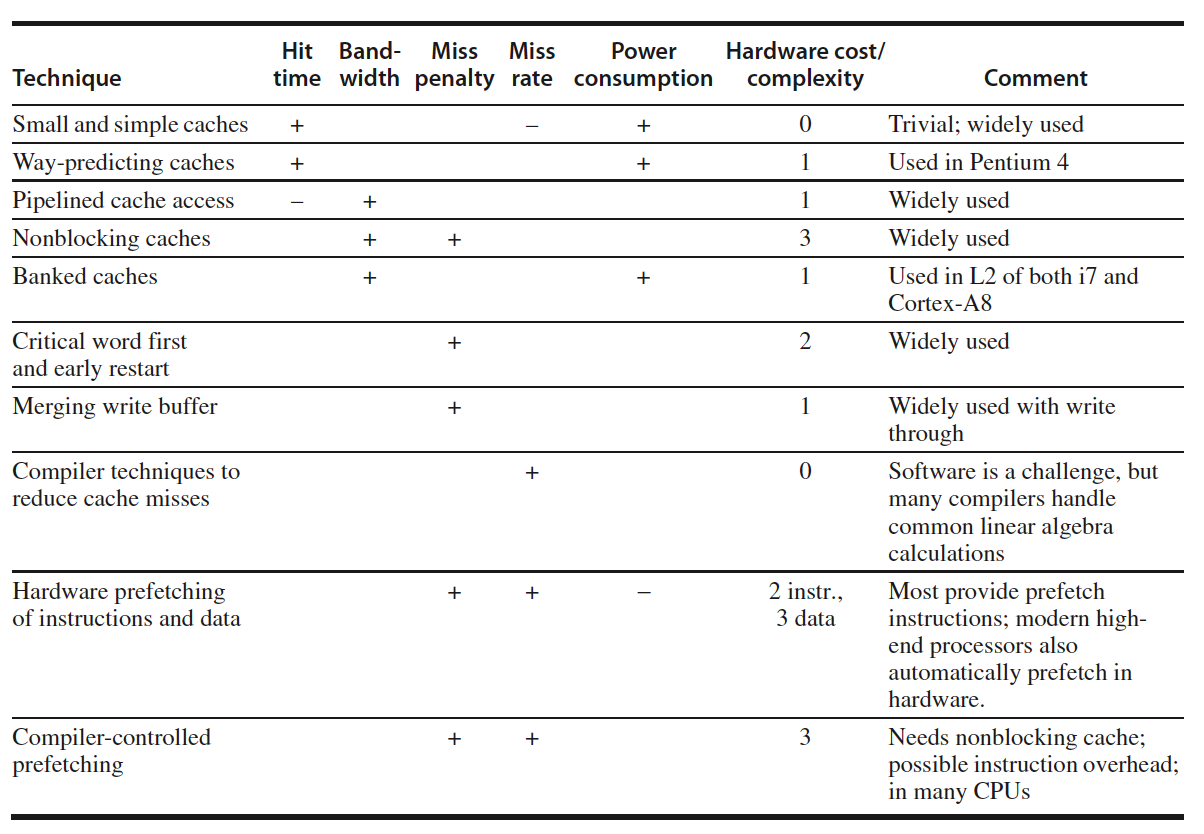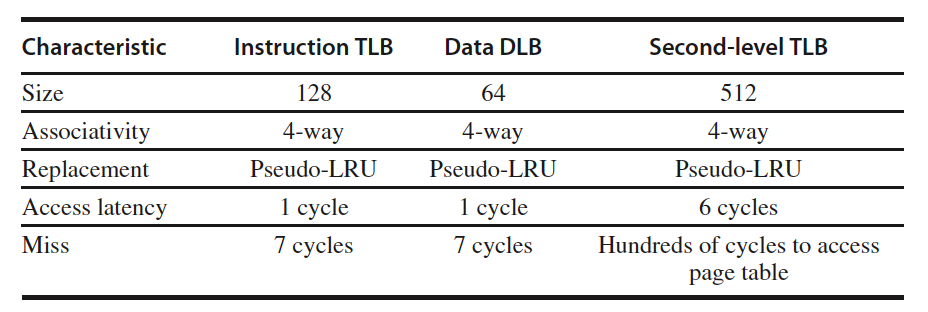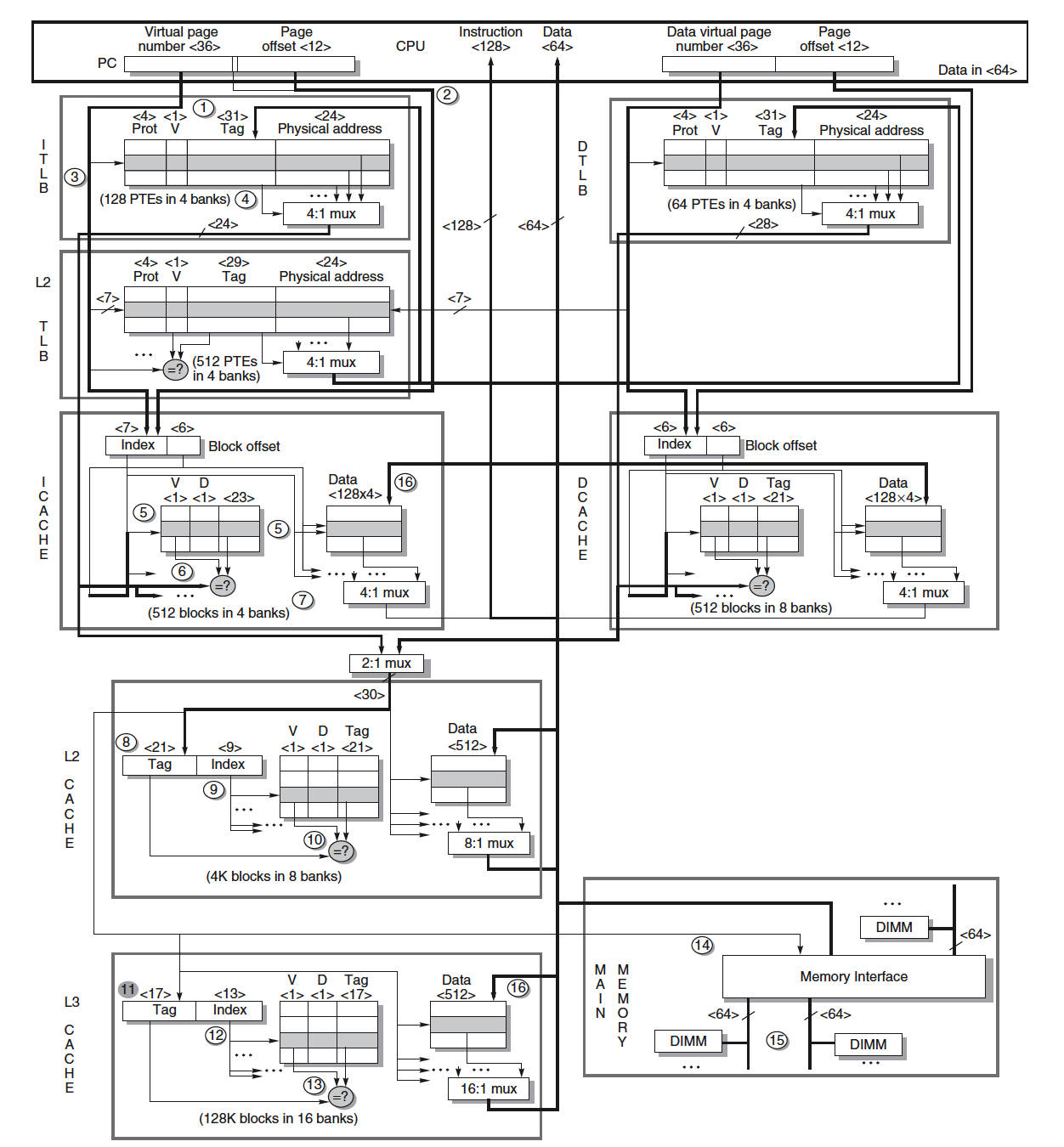Overview

Memory Technology:
- SRAM
- use six transistors per bit to prevent the information from being disturbed when read; don't need refresh
- L1 L2 L3 cache
- DRAM
- requires data to be written back after being read; need refresh
- main memory
- SDRAM
- have a programmable register to hold the number of bytes requested, and hence can send many bytes over several cycles per request
- DDR
- double data rate
- transfer data on both the rising edge and falling edge of the DRAM clock signal
- FLASH Memory
- Flash memory is a type of EEPROM (Electronically Erasable ProgrammableRead-Only Memory),
- normally read-only but can be erased
- it holds it contents without any power
- HDD
Summary

Summary of 10 advanced cache optimization

The Intel Core i7's Cache
The i7 supports the x86-64 instruction set architecture, a 64-bit extension of the 80x86 architecture. The i7 is an out-of-order execution processor that includes four cores.
Each core in an i7 can execute up to four 80x86 instructions per clock cycle, using a multiple issue, dynamically scheduled, 16-stage pipeline.
The i7 can also support up to two simultaneous threads per processor, using a technique called simultaneous multithreading
The i7 can support up to three memory channels, each consisting of a separate set of DIMMs, and each of which can transfer in parallel. Using DDR3-1066 (DIMM PC8500), the i7 has a peak memory bandwith of just over 25 GB/sec
i7 uses 48-bit virtual addresses and 36-bit physical addresses, yielding a maximum physical memory of 36 GB. Memory management is handled with a twolevel TLB.

i7’s three-level cache hierarchy. The first-level caches are virtually indexed and physically tagged, while the L2 and L3 caches are physically indexed.


Reference:
Computer Architecture: A Quantitative Approach 5th Edition
Intel i7-4770 (Haswell) performance
Understanding CPU caching and performance
Computer memory history